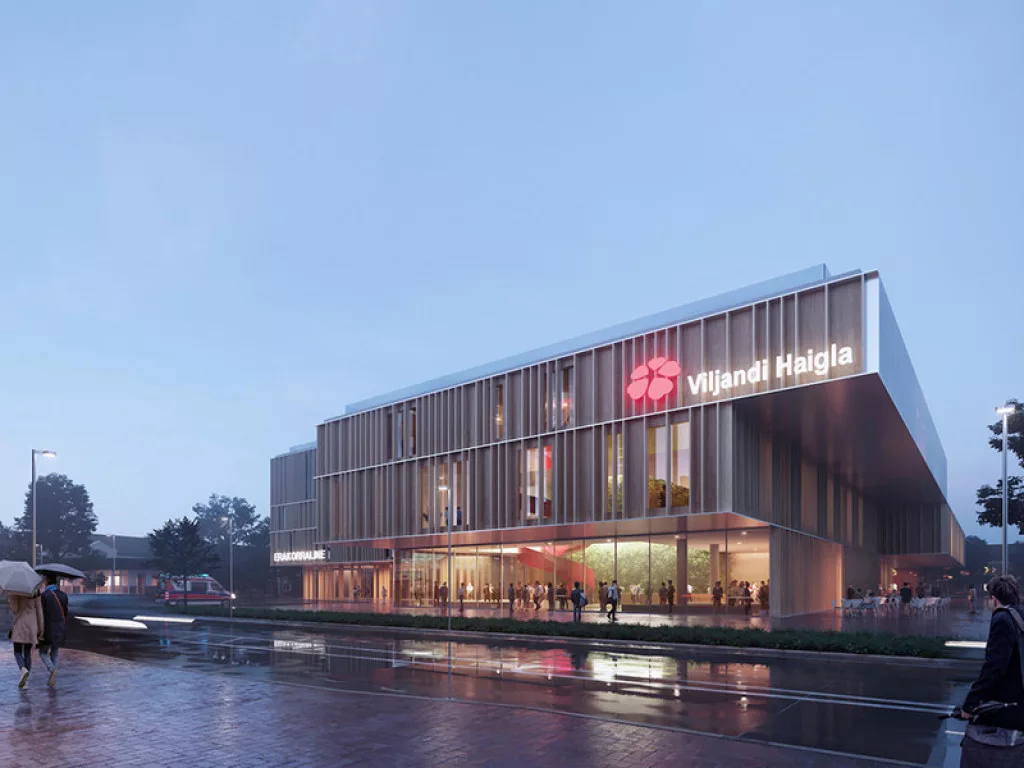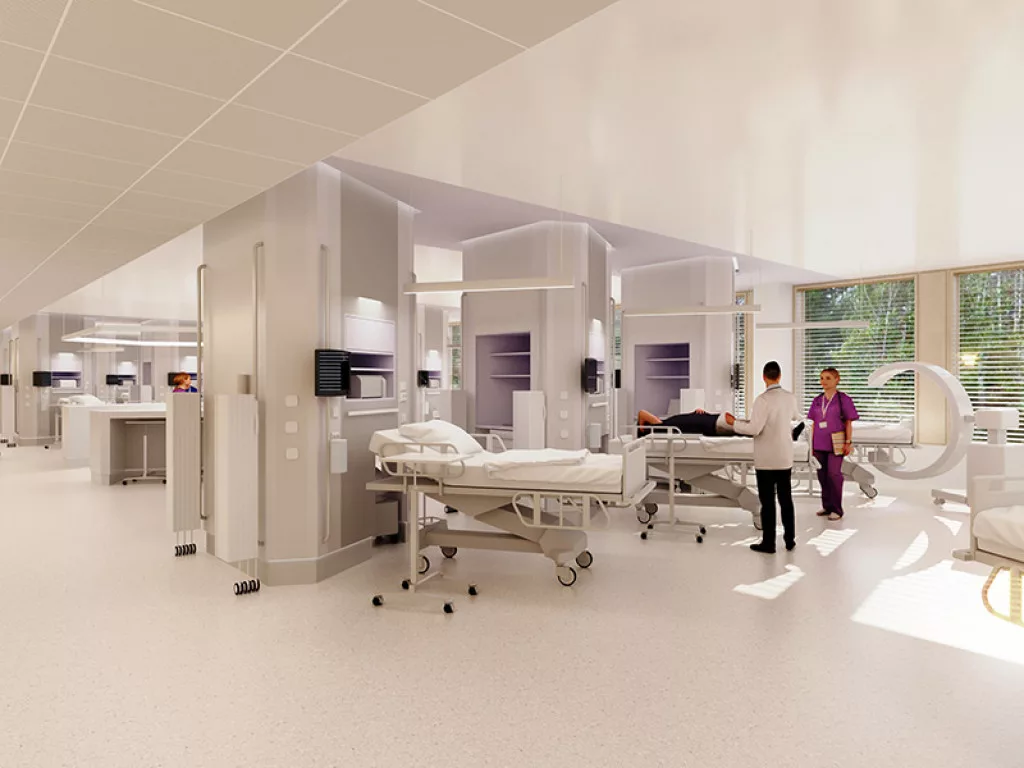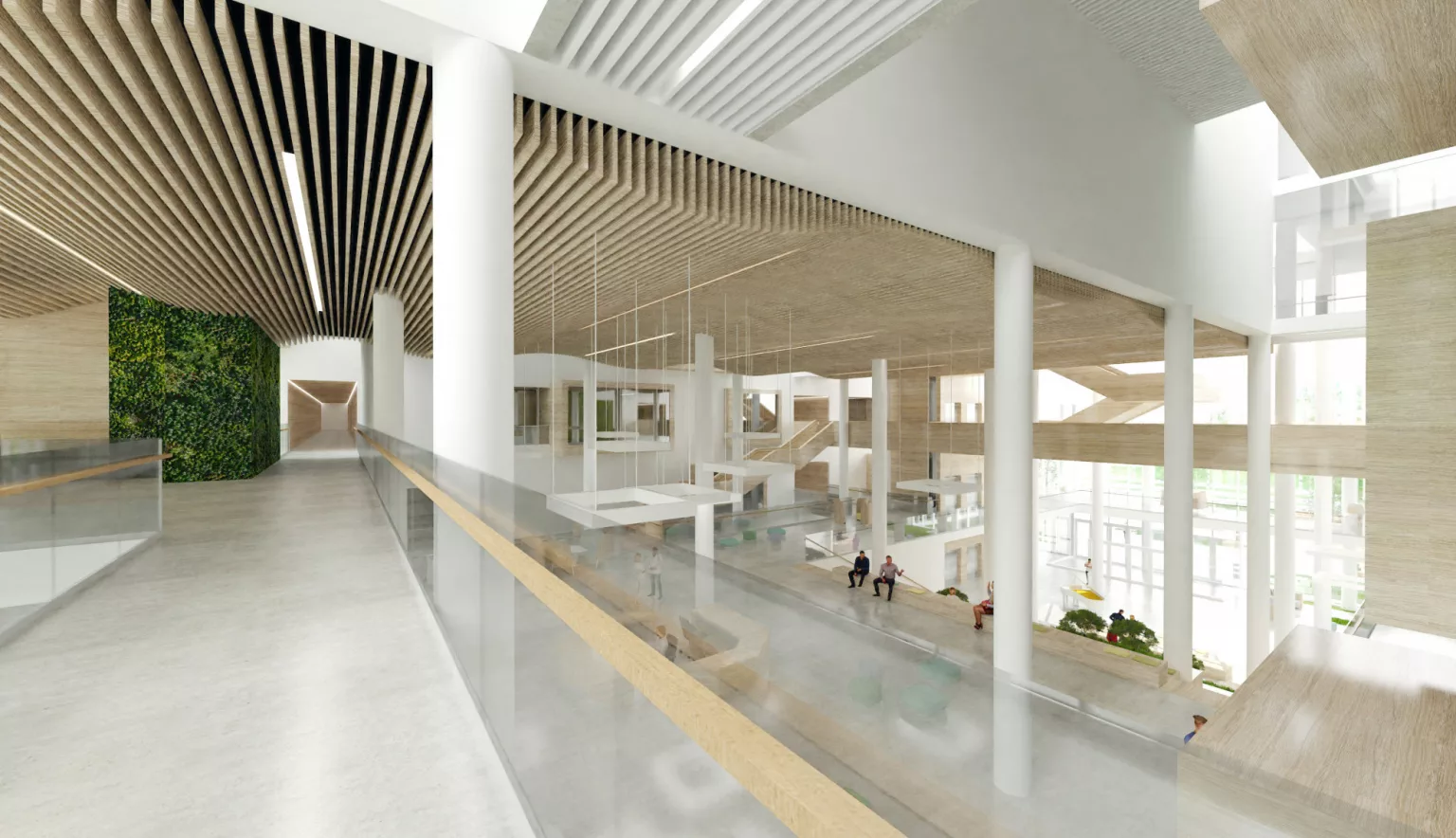“Better design – better healthcare.” We take a look at Integrated Healthcare Design and speak to the company’s CEO, Anssi Hakarinne, about the latest projects undertaken across the Baltic region.
BALTIC AND NORDIC HEALTHCARE
The Nordic and Baltic regions are known for many highly successful and leading industries and subsectors within the European continent, such as design.
Within one such subsector, Integrated Healthcare Design (IHD) specialises in providing building design as well as digital platform design for various healthcare institutions. A Nordic-Baltic company with employees in Helsinki (Finland) and Tallinn (Estonia), IHD currently operates across all Baltic countries as well as in Poland, Romania and Slovenia.
DESIGN WITH PEOPLE AND DATA
“The industry is incredibly exciting at the moment,” begins Anssi Hakarinne, CEO of IHD. “We are at a point where data is growing at a fast pace, and this is what is driving us at the moment towards better design solutions.”
IHD’s design work foundation consists of a cooperation between its own designers, partner network designers and those who are local to the project construction site. When it comes to platform design, IHD conducts data management from the primary and initial stage of a project building, throughout the entire design and construction process, with the data becoming usable for the entirety of the building’s lifespan. These design platforms gather the handling of information regarding medical technology and the company’s partner network platforms.
“Our focus is placed strictly on healthcare buildings and projects,” Hakarinne explains. “This gives us a higher understanding of these specific building types. We rely on our network of expertise which consistently gives us the top of the range expertise in the field. We also understand that knowledge comes from data, people and the integration of these two, which gives us a greater capability to learn from the past.
“At IHD, we think that every piece of data being utilised in a project should be ‘written’ only once, and then simply used throughout the design process; this provides a very lean process to design.”
The incorporation of consistent data as well as the varying and diverse nature of IHD’s design experts allows the company to provide complete and enduring design solutions for not only the building, but the platforms that will help it, and the people that use it, in the long-term.
“Better Design, Better Healthcare”
Integrated Healthcare Designs

INTEGRATED HEALTHCARE DESIGN AT THE CORE
The designing phase represents a small part of the total costs of the construction of a building, but it can have significant long-term impact on the overall operating and lifecycle costs. Unfortunately, the established multistage tendering and traditional construction planning processes have led to the separation between the different fields of planning and design. The design teams are brought together fairly late in the process, which does not encourage multidisciplinary R&D and innovation.
In a traditional construction project, designers and engineers optimising their own part of the project often results in de-optimisation. This lack of interaction between the fields can lead to problems such as unclear responsibility areas, error estimates, expensive design solutions and lost information.
The integrated planning approach offers a solution to these aforementioned problems. It is an innovative approach to planning that enables assessing the lifecycle of the building, cutting costs and improving productivity. In the integrated planning process, multidisciplinary teams work together and with the same data from the beginning to the end of the project. The main goal is to create a team effort by integrating owners, architects, engineers, managers and users into the process in order to optimise efficiency and create innovative solutions.
In the integrated design process, building information modelling (BIM) serves as the main tool and platform for collaboration. BIM allows the design team to create visualisation of the project and insert all essential information about the facility. With the use of BIM, the design team is able to effectively measure the lifecycle of the materials and solutions as well as collaborate efficiently.
DIGITAL DESIGN
With digitalisation existing as a large aspect of the company’s practice and services, it is no surprise that IHD have been investing in the field, in particular, BIM.
“BIM and digital design are the core of our business,” Hakarinne affirms. “For us, BIM is a digital environment where the data from different kinds of databases can be visualised as a hospital building and constructed as such. Our main investments in this field go into integrating the medical technology and process information/data into building construction information.
“We are constantly investing to get the best usage from existing BIM related software integrated into our own medical technology and healthcare process databases.”
IN THE FIELD
Of the many projects that IHD is undertaking, the company’s hospital projects, such as the Tallinna Hospital (Estonia), Kanta-Häme Central Hospital (Finland), and Viljandi Hospital (Estonia), are those that stand out as the prime examples that embody its digital developments.
“In the case of the Tallinna Hospital, we are providing a multi-talented network of experts integrated into the usage of different types of databases,” Hakarinne tells us. “All this know-how is concentrated so that it can be seen through the BIM, which we have created from that hospital.
“It has also been very intense timewise, we have collected and processed all the information from the end-users in just half a year. The project is still in very early stages, and we are looking forward to getting underway with this.”
Looking to the Kanta-Häme Central Hospital, Hakarinne elaborates his own personal interest in the project during its recent initial phase of building.
“What I especially like in this project is the innovation throughout the design process,” he reveals. “I would say the best example that captures this will be the waking up area of the operating department, where we rethink the whole logic of patient orientation towards the surroundings. We manage to turn the patients towards the light, and we believe this will provide better healing results in the future.”
The Viljandi Hospital project involved an alternative route of thought regarding BIM. According to Hakarinne, it was the first project where IHD handled most of the medical technology data partially outside of BIM. This marked the beginning of a new era for the company, and one that Hakarinne is keen to see.
“BIM and digital design are the core of our business”
Anssi Hakarinne, CEO, Integrated Healthcare Design

BEYOND THE BALTIC
And moving forward into the years ahead, IHD has both expansion and development plans at the forefront of the company, as Hakarinne explains. “Our aims and goals are Europe and beyond, especially within the eastern European markets,” he tells us. “We want to see growth in that market and so we are currently investing a substantial amount into development in the region.
“Our present growth is quite rapid, but to bring about our eastern European aims we are investing further into technological development and the integration of data management platforms.”
IHD aims to be a game changer in hospital design by integrating the best expertise and experience in the field combined with data utilisation to bring about the reality as stated in the company’s motto: “Better Design – Better Healthcare.”
























